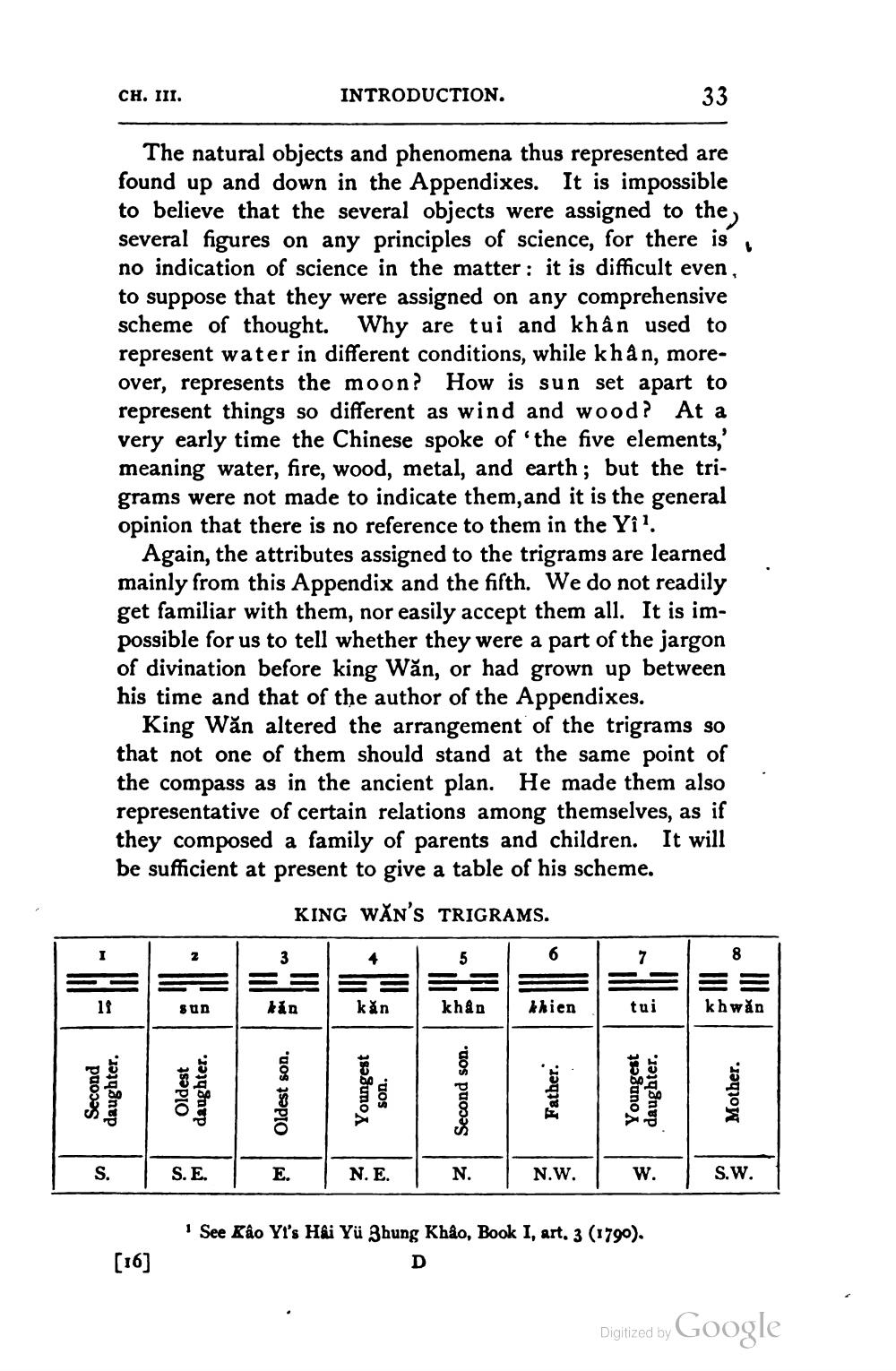________________
CH. III.
INTRODUCTION.
The natural objects and phenomena thus represented are found up and down in the Appendixes. It is impossible to believe that the several objects were assigned to the several figures on any principles of science, for there is no indication of science in the matter : it is difficult even, to suppose that they were assigned on any comprehensive scheme of thought. Why are tui and khân used to represent water in different conditions, while khân, moreover, represents the moon? How is sun set apart to represent things so different as wind and wood? At a very early time the Chinese spoke of 'the five elements,' meaning water, fire, wood, metal, and earth; but the trigrams were not made to indicate them, and it is the general opinion that there is no reference to them in the Yi'.
Again, the attributes assigned to the trigrams are learned mainly from this Appendix and the fifth. We do not readily get familiar with them, nor easily accept them all. It is impossible for us to tell whether they were a part of the jargon of divination before king Wăn, or had grown up between his time and that of the author of the Appendixes.
King Wăn altered the arrangement of the trigrams so that not one of them should stand at the same point of the compass as in the ancient plan. He made them also representative of certain relations among themselves, as if they composed a family of parents and children. It will be sufficient at present to give a table of his scheme.
KING WĂN'S TRIGRAMS.
5
SUD
kin
kån
khân
| | kien
khăn
Second daughter.
Oldest daughter.
Oldest son.
Youngest
son.
Second son.
Father
Youngest daughter.
Mother.
Iz
S.E.
N.E.
N.W.
S.W.
' See Kảo Vs Hải Yū Bhung Khảo, Book I, art, 3(179).
[16]
Digitized by Google




